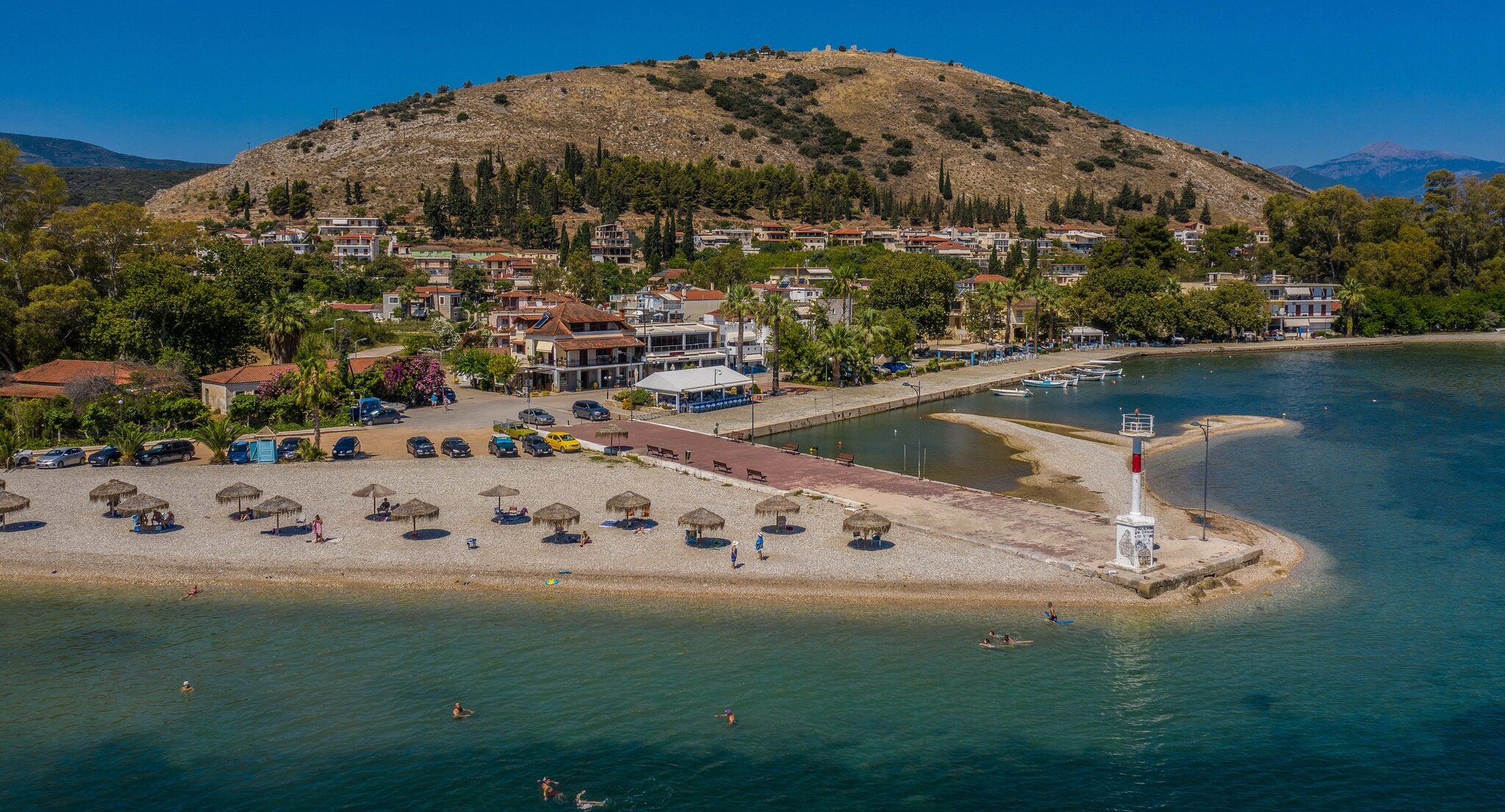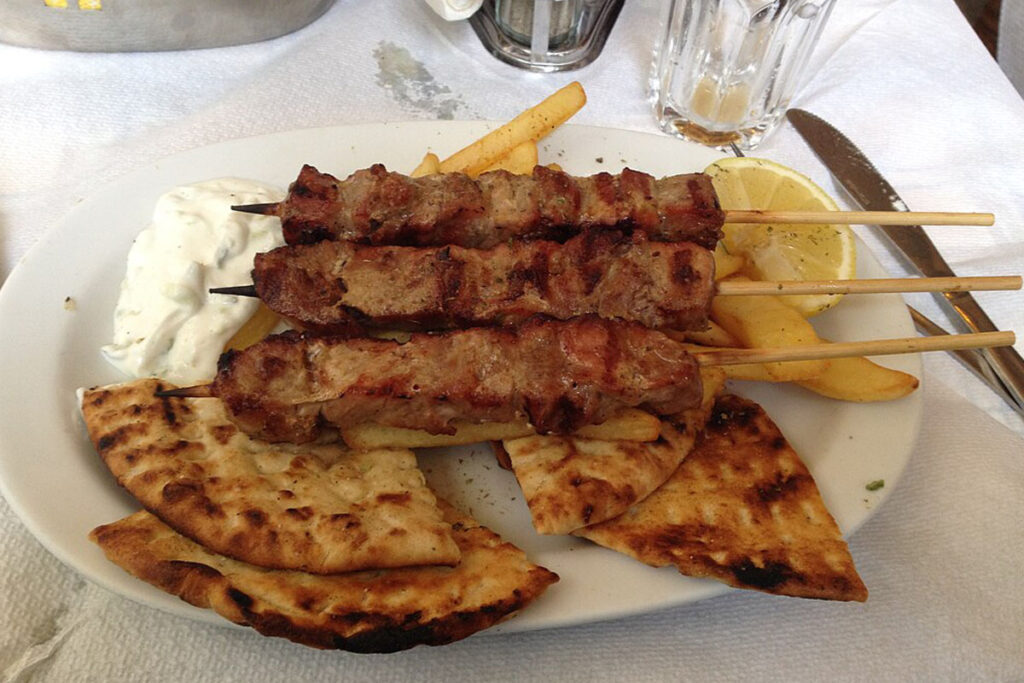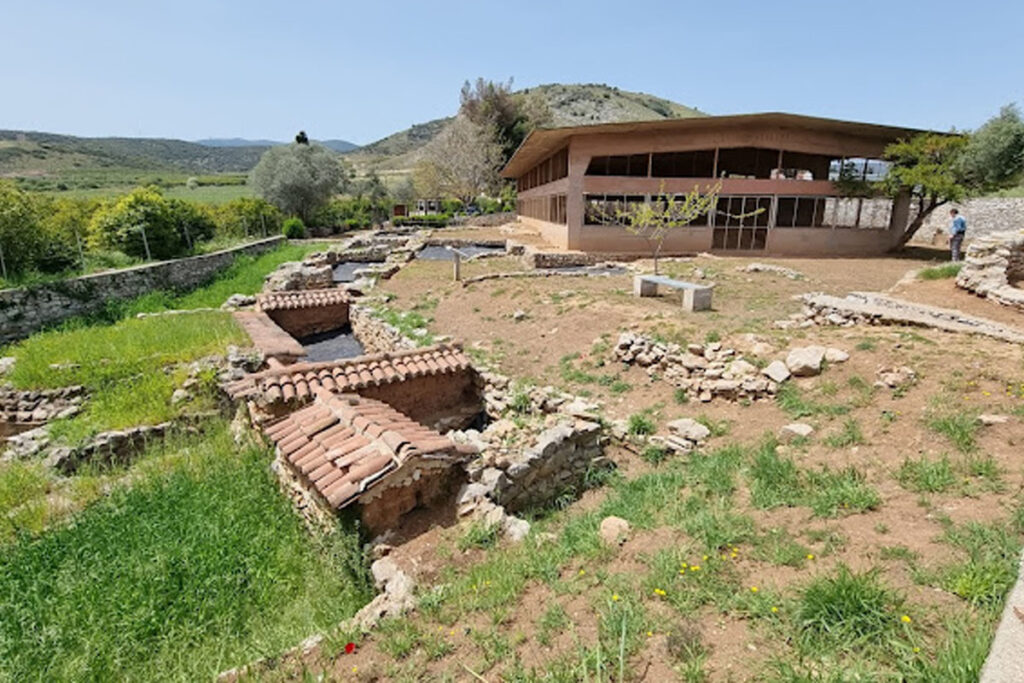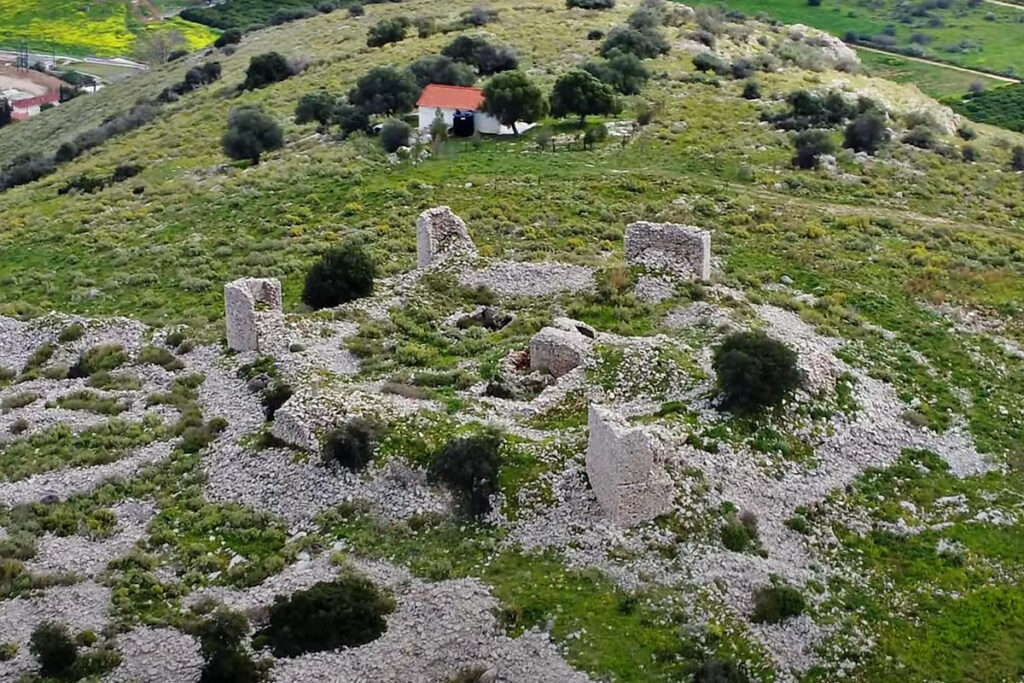Myloi in Argolida : Peace, Culture, and History by the Sea

Visit Myloi!
Myloi is a small fishing village on the northwestern shore of the Argolic Gulf in the Peloponnese. With around 1,000 residents, it offers a calm, unpretentious atmosphere typical of rural Greece. Visitors will find a pebble beach and clean, shallow seawater. The climate is mild throughout the year, even in winter. Myloi is especially popular with Greek vacationers looking for relaxation, but tourism remains modest and authentic. Along the modest harbor, traditional tavernas serve fresh seafood, and the pace of daily life is unhurried. It’s the kind of place where people greet each other, and a simple coffee or meal by the water becomes a highlight of the day.
Myloi and its souvlaki tradition

Despite its small size, Myloi has a lasting culinary reputation for souvlaki, the classic Greek grilled meat skewer. During the height of railway travel in the 1970s and 1980s, Myloi became regionally famous for its souvlaki vendors who would sell freshly grilled skewers to train passengers during brief station stops. Even after train service ended, the tradition continued. Located along the old national road before the steep Kolosourti mountain pass, Myloi became a favored stop for drivers and bus passengers alike. Local grill shops served fast, delicious souvlaki to travelers heading to and from southern Greece. Today, several tavernas around the village square and main crossroads still proudly serve this local specialty. The recipe remains simple and time-honored: marinated pork grilled over charcoal, served with fresh bread, oregano, and lemon. For many, stopping in Myloi for souvlaki is part of the travel experience — a small but memorable taste of Greek food culture.
Railway history and the old station

Myloi once played an important role in the Peloponnese railway network. In the late 19th and early 20th centuries, the village became a key junction when railway lines connecting Corinth, Argos, Nafplio, and further south to Tripoli and Kalamata were built. The station building, constructed in 1886, still stands — a small yellow plastered structure with red shutters. Though now inactive, it’s a nostalgic reminder of the era when trains brought both people and goods through the region. Rail service stopped in 2010, and the tracks are now disused. A few rusted locomotives still sit silently by the old platforms, and there were once plans to turn the site into a railway museum. For now, the station remains quietly abandoned, a monument to a different time.
Archaeological site of Lerna

Just outside Myloi lies the archaeological site of Lerna, one of the oldest known settlements in Greece. Inhabited from the Neolithic period through the Mycenaean era, Lerna provides key insight into early Greek history. The most famous discovery is the so-called “House of Tiles,” a large, tile-roofed structure dating to around 2500 BC. Though modest in size, the site is significant for archaeologists. In Greek mythology, Lerna was also where Hercules fought the multi-headed Hydra, but the real interest here is its deep prehistoric layers. Visitors can explore the site for a small fee. Informational signs and a marked path provide a self-guided experience through this quiet and historically rich area.
The Frankish castle on the hill

Above Myloi, on the Pontinos hill (179 meters high), lie the remains of a medieval castle, it dates back to the 14th century, when Frankish rulers controlled parts of Argolida. Its location was strategic, offering views of the coastline and the fertile plains below. Historical sources mention that in ancient times a temple to Athena may have stood here, but the visible ruins are clearly from the later medieval period. The castle was likely built by Gautier de Brienne, a feudal lord of Argos and Nauplio. During the 15th century, it was largely destroyed during conflicts between the Venetians and Ottomans. Today, a few stone walls remain, along with a small white chapel dedicated to Prophet Elias. The hilltop can be reached via an unmarked walking path. Visitors are rewarded with panoramic views of Myloi, the Gulf, and the surrounding countryside. You can find the hike on AllTrail
Centrally located for day trips
Myloi’s location makes it a convenient base for exploring Argolida. It lies just a few kilometers from both Nafplio and Argos, and key archaeological sites are within easy driving distance. Whether by car or bus, travelers can use Myloi as a quiet overnight stay while exploring some of the Peloponnese’s top attractions.
Distances to major sites:
- Nafplio (approx. 8 km east) – a historic port town and former capital of modern Greece, known for its Venetian fortresses and charming old town.
- Argos (approx. 9 km north) – considered Europe’s oldest continuously inhabited city, featuring ancient ruins and a large classical theater.
- Mycenae (approx. 20 km) – the legendary Bronze Age citadel and UNESCO site, famous for its Lion Gate and royal tombs.
- Epidaurus (approx. 35 km) – home to the famous ancient theater with perfect acoustics and the sanctuary of Asclepius, also a UNESCO site.
From Myloi, visitors can explore the region’s natural and historical wealth by day and return in the evening to a village where life remains pleasantly low-key. Whether your interest lies in archaeology, medieval ruins, or a simple swim followed by a plate of souvlaki, Myloi offers a genuine, relaxed Greek experience.

Nafplio

Argos

Mycenae

Epidaurus
